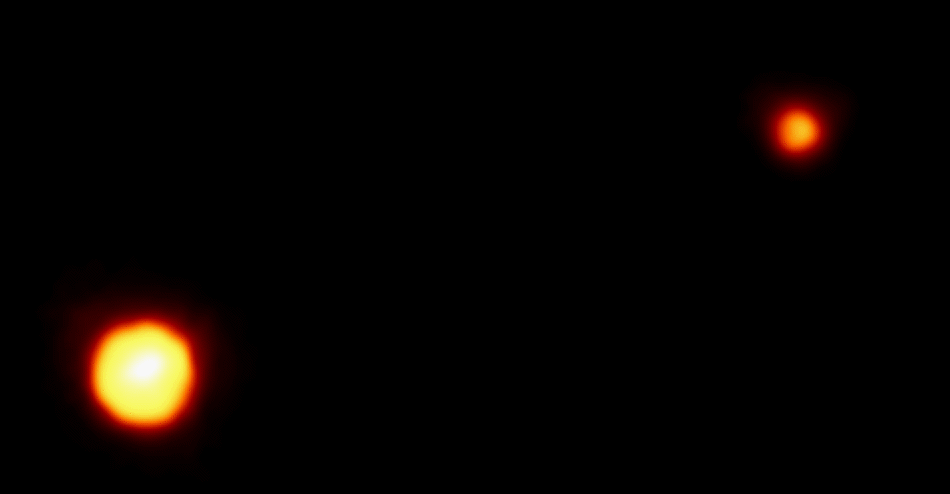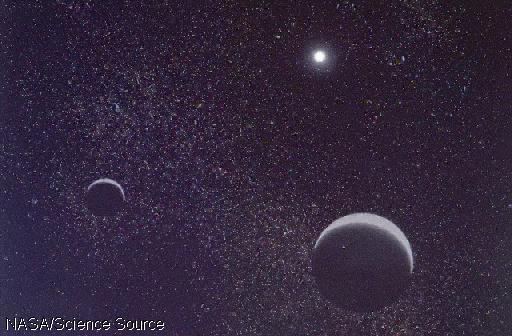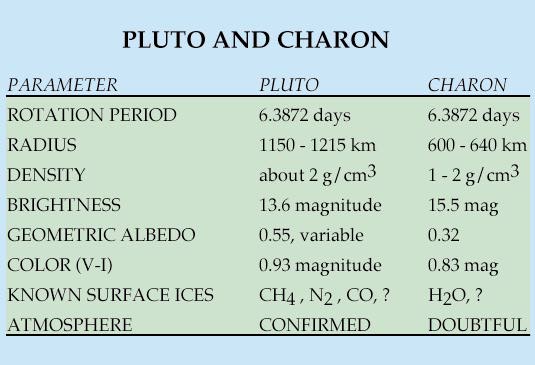

1. Overview
2. Discovery
3. Statistic
[Previous Page] [Next Page] [Back to Main Page]
Overview
 |
 |
 |
Charon is named for the mythological figure who ferried the dead across the River Styx into Hades (the underworld)
Charon is unusual in that it is the largest moon with respect to its primary planet in the Solar System (a distinction once held by Earth's Moon). Some prefer to think of Pluto/Charon as a double planet rather than a planet and a moon.
Pluto and Charon are also unique in that not only does Charon rotate synchronously but Pluto does, too: they both keep the same face toward one another. (This makes the phases of Charon as seen from Pluto very interesting.)
Charon's composition is unknown, but its low density (1.4 gm/cm3) indicates that it may be similar to Saturn's icy moons (i.e. Rhea). Its surface seems to be covered with water ice.
Unlike Pluto, Charon does not have large albedo features, though it may have smaller ones that have not been resolved.
It has been proposed that Charon was formed by a giant impact similar to the one that formed Earth's Moon.
It is doubtful that Charon has a significant atmosphere.
synchronous rotation said of a satellite if the period of its rotation about its axis is the same as the period of its orbit around its primary. This implies that the satellite always keeps the same hemisphere facing its primary (e.g. the Moon). It also implies that one hemisphere (the leading hemisphere) always faces in the direction of the satellite's motion while the other (trailing) one always faces backward. Most of the satellites in the solar system rotate synchronously.
Discovery
| Charon Statistics | |
|---|---|
| Discovered by | J. Christy |
| Date of discovery | 1978 |
| Mass (kg) | 1.77e+21 |
| Mass (Earth = 1) | 2.9618e-04 |
| Equatorial radius (km) | 635 |
| Equatorial radius (Earth = 1) | 9.9561e-02 |
| Mean density (gm/cm^3) | 1.83 |
| Mean distance from Pluto (km) | 19,640 |
| Rotational period (days) | 6.38725 |
| Orbital period (days) | 6.38725 |
| Mean orbital velocity (km/sec) | 0.23 |
| Orbital eccentricity | 0.00 |
| Orbital inclination (degrees) | 98.80 |
| Escape velocity (km/sec) | 0.610 |
| Visual geometric albedo | 0.5 |
| Magnitude (Vo) | 16.8 |
Document last modified on 05/31/97
17:14:10 by Huan-Jim Ngo